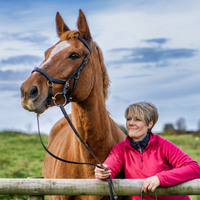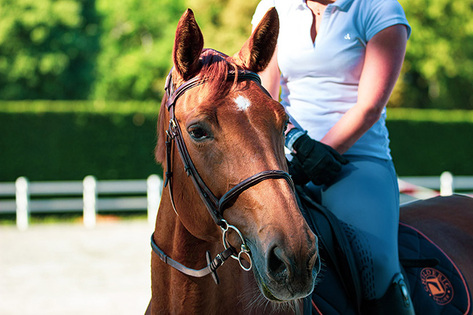
Are You & Your Horse Ready For Bitting Advice? The Steps You Need To Consider First
Equestrian Advice & Guides All Disciplines
Build your business profile for FREE and expose your services to thousands of potential clients!
Create my profile now!
Have you ever wondered if your horse knows what you’re thinking? Perhaps you’ve not been committed going into a jump and you’ve stopped, without applying any slow-down or stop aids, and without taking your leg off? Or maybe you were thinking about cantering and your horse started to canter, before you applied any aids?
How many times have you felt that your horse knows you’ve had a bad day? How did your horse know? How did you know?
Even though horses have been domesticated for millennia, they have never lost their mental capabilities to detect the slightest nuances of a change in behaviour. It may be a missed heartbeat or a slight shift of weight. The ability to recognise minute changes is what kept wild horses safe; the ability to know another’s intent before they make a move.

When we think about making a move, such as beginning to trot or going in a certain direction, there are micro changes in our bodies – possibly unnoticeable to us – that happen before a more obvious movement of applying an aid. What would, to you, be an infinitesimal change in your position – whether that was a lift of a finger, a head tilt or even the movement of a toe – was transmitted to your horse and they reacted.
With some practice, this can work to our advantage as riders. When we think of a smooth and natural transition to another gait and effortless transitions between gaits, we achieve that not with large amounts of movement or pressure, but without trying too hard! We can expand on this to move seamlessly through transitions by thinking about what we want to do. It’s like a half-halt in your mind. Remarkably, after some time, your horse will understand this subtle style of communication, such that your aids become light as a feather, or not needed at all!
Try this exercise:
It does take some time to get it right, but when the aids you use become softer and easier, you’ll reap the benefits of all this preparation.

Now that we know that our horses miss nothing of our motions, let’s think about the more routine movements we may be making and the ‘louder’ communication we’re sending out. For example, we can tense certain muscles and muscle groups (think shoulder tops, upper back), we can also start to breathe differently, more deeply or in a more shallow pattern – even the location of our breathing may change, we may start to breathe deeply into the pelvis or higher into the chest. These all send out clear messages to our equine friends. They will have ‘calibrated’ you long ago and worked out what your resting body language looks like. Now all they need do is look at the changes to identify a change of state or behaviour.
Horses are also adept at recognising signals such as a change of heart rate, changes in the grip of our hands or a change of weight distribution / centre of gravity. Some of these changes change our horses too. A study at the University of Guelph in Canada showed that as riders’ heart rates changed, this change was mirrored by the horses.
A horse whose heart rate increases may not know the reason, but they feel it and may become more liable to anxiety themselves. Showing fear or anxiety around a horse is quite conflicting for them; whilst you are trying to take courage from them – even create a deeper bond with them – you’re sending out a strong message of fear.

In animals, fear is often considered worse than pain! This is because humans have the brain capacity to acknowledge the fear and be rational about it. This goes some way to managing the fear. Horses are not able to do this; they lack the developed prefrontal cortex of the human brain. For a horse, fear is very, very real.
How, as riders, could we start to control our anxiety? There are lots of options, if one doesn’t work for you, try another. You can get rid of your fear!
If something with a bit more oomph is needed, why not try NLP or hypnotherapy? You can find out more about these techniques at https://www.traceycolenlp.com.
Dr Tracey Cole is one of the UK's leading midset experts helping, supporting and training equestrians. To find out more about her work, please visit her website at https://www.traceycolenlp.com or check out her other articles here on the Horsemart Blog > https://www.horsemart.co.uk/community-author/dr-tracey-cole

